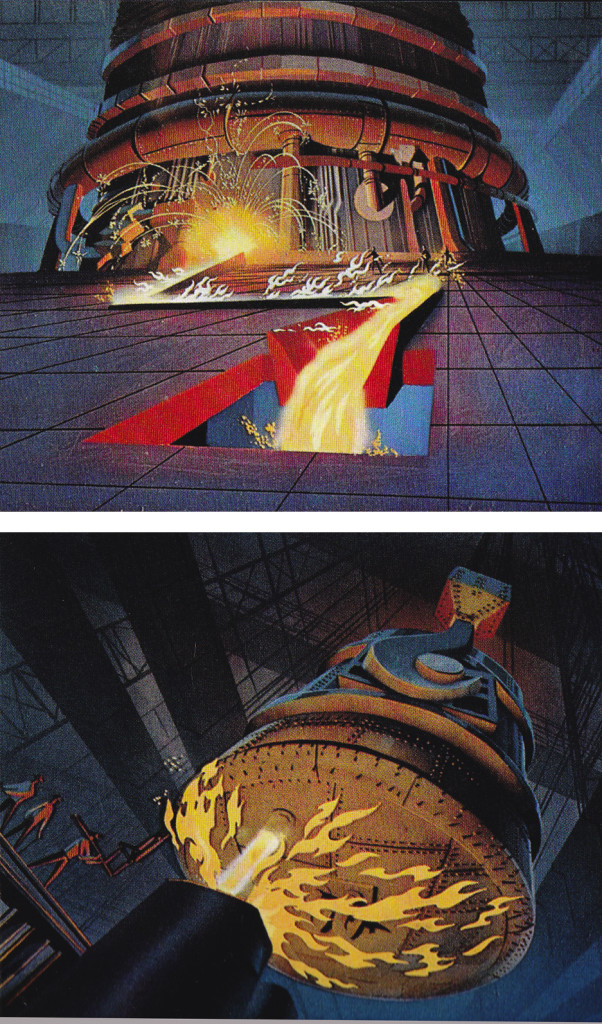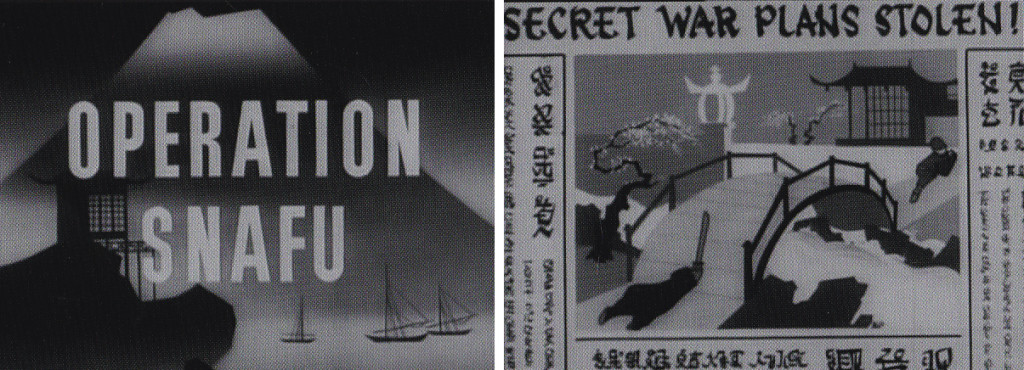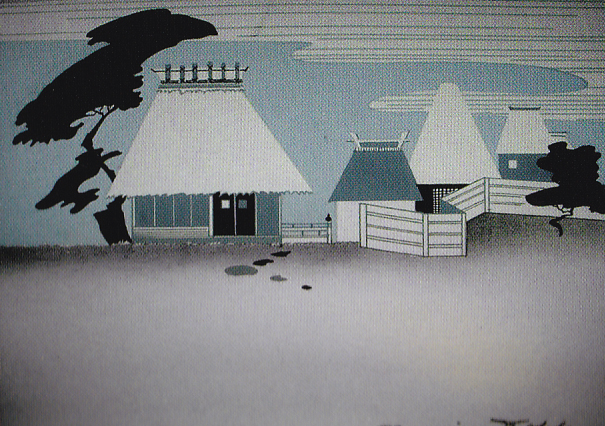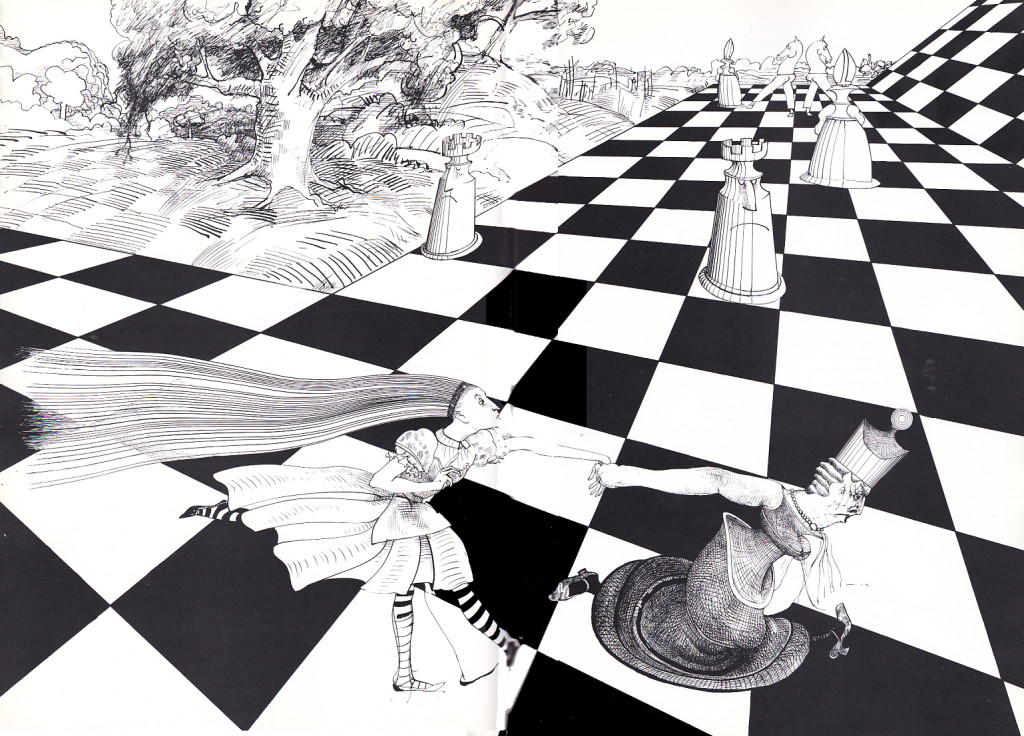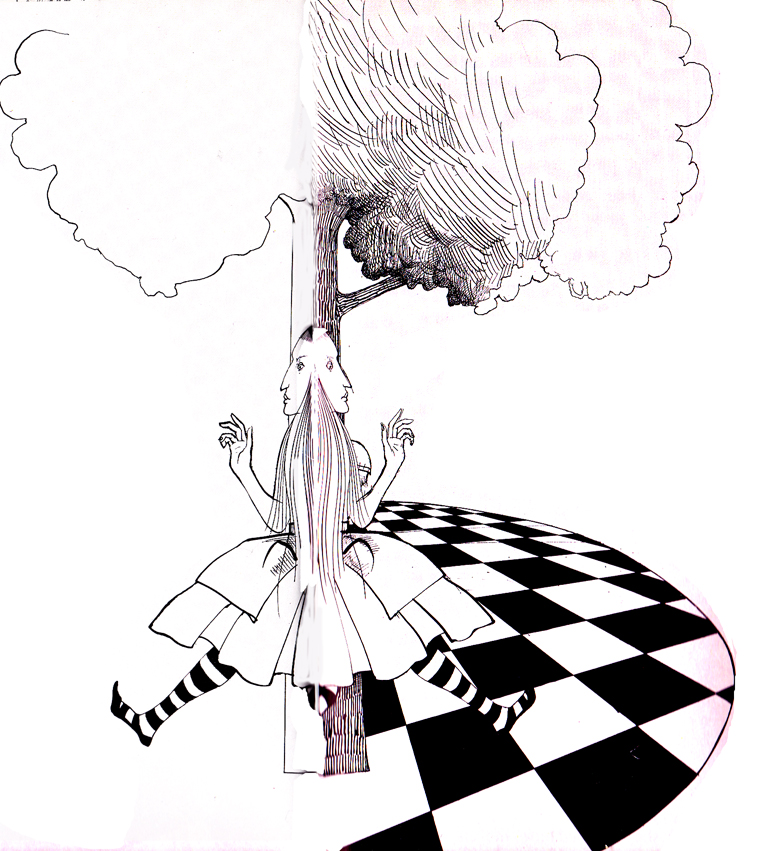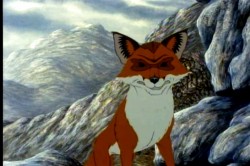Category ArchiveCommentary
Books &Chuck Jones &Commentary &Illustration &Layout & Design &Models 26 Sep 2013 08:22 am
Rhapsody in Working for Suherland
Maurice Nobel worked several years at Warner Bros. under Chuck Jones for the most part, but in 1950 he moved to John Sutherland Productions where he worked on lesser known projects. He had a money war with Eddie Seltzer at WB and accepted the higher price from Sutherland with Selzer telling him that the door would remain open.
WB tried to turn everything to 3D and gave up after one cartoon, Lumberjack Bunny. It’s obvious that some of Maurice’s LOs were prepared for 3D and were switched at the last minute. WB was closed for a year when it was decided to stop production on the 3D films. Noble had taken the right course in working for Sutherland for the few years he was there.
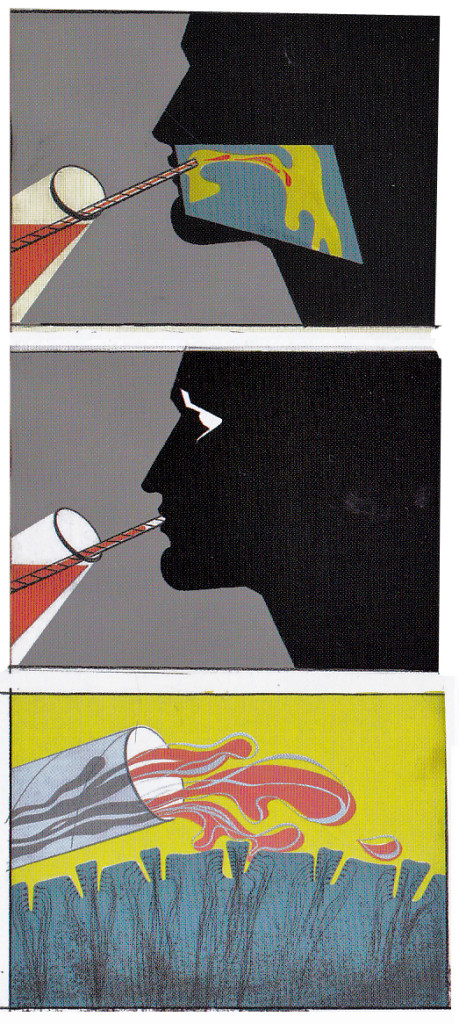
Color keys to the John Sutherland Prod
Gateways to the Mind

Rhapsody in Steel (below) was a high budget film for Sutherland with Eyvind Earle hired as Art Director. Ultimately he just painted the BGs that were designed by Maurice Noble. This beautiful film can be seen on YouTube, here.
Books &Commentary &Independent Animation 24 Sep 2013 08:14 am
I love the early Warner cartoons. I’m particularly fond of the late thirties and early forties when they were finding their design style, and. in fact, were probably being the most daring in the US with their graphic choices. John McGrew along with the husband and wife team of Gene Fleury and Bernyce Polifka were doing magnificent and, even, daring work. When Maurice Noble entered the scene his was the final wrench to tighten the bolts.
It’s for this reason that I am spending so much time on the opening section of Tod Polson‘s book, The Noble Approach from Chronicle books. Here are some magnificent images from that section of the book. You should go to YouTube and look at A Few Quick Facts About Fear. It’s a magnificent work that was done for the Signal Corps (although it was done by UPA in its very earliest days.)
Desert Designs by Noble
John McGrew’s BG designs for The Unbearable Bear
Animation Artifacts &Articles on Animation &Books &Commentary 23 Sep 2013 08:00 am
Heading Toward WB
Maurice Noble began his art career at Chouinard’s Art Institute. He and Mary Robinson (Blair) followed similar paths at the school. They both moved on to jobs decorating windows of Robinson’s Department Store. Their design styles were in no way similar, but their approaches to the art were. This was during the Great Depression, and there was no chance of getting a raise of salary there to match what ould be earned at Disney, They both moved on to working at Disney’s Studio.
 His first assignments were in painting backgrounds for some Silly Symphony cartoons such as Elmer Elephant, Water Babies, The Old Mill and The Country Cousin. All of these were “A” list Symphonies and were certainly plumb assignments within the studio, yet it took Maurice a short bit of time to appreciate the move he’d made toward animation. He soon found himself painting backgrounds on Snow White and designing on Bambi, Pinocchio, Fantasia and Dumbo. On Dumbo he helped to design the Pink Elephants sequence. He developed his personal approach to animation design.
His first assignments were in painting backgrounds for some Silly Symphony cartoons such as Elmer Elephant, Water Babies, The Old Mill and The Country Cousin. All of these were “A” list Symphonies and were certainly plumb assignments within the studio, yet it took Maurice a short bit of time to appreciate the move he’d made toward animation. He soon found himself painting backgrounds on Snow White and designing on Bambi, Pinocchio, Fantasia and Dumbo. On Dumbo he helped to design the Pink Elephants sequence. He developed his personal approach to animation design.

Selected art by Noble from Snow White
There was also a legendary screening, set up by Frank Lloyd Wright, attended by many at the Disney design group, of a Russian animated film called The Tale of Czar Durandai. This 1934 short film was directed by the famous Ivan Vanov-Vano. John Hubley also used thisfilm as an example of inspirational work for the animation he was to do.

The Tale of Czar Durandel
Maurice Noble had also participated in the strike at Disney’s. When it was over, he was given a second-rate office, and it was obvious he was no longer in high demand at the Studio. He sat doing nothing for quite some time before receiving severance pay. He then joined the Signal Corps to work for the Army. The aggregation of artists who had joined the group was a top-notch selection of excellent designers all of whom were committed to 20th Century Art in animation. Animation had joined the Modernist movement, and was on its way to producing “adult” fare.

A Few Quick Facts About Fear was a short produced/directed by Zach Schwartz
which took complete use of the new approach to artwork in animation.
Noble worked with Zach Schwartz on a film which led the way to the new approach to animation art. The film was done purposefully in B&W using a bold approach to the art.

Maurice Noble in the SignalCorps.
Books &Commentary &Illustration 16 Sep 2013 07:45 am
More of Steadman’s Alice
Here are a few more pages of Ralph Steadman‘s Alice In Wonderland. This takes us up to Tweedledee and Tweedledum. Major scanning coming up, so I had to break here.
 1
1
Articles on Animation &Chuck Jones &Commentary 12 Sep 2013 12:31 am
Saturday Notes on Thursday
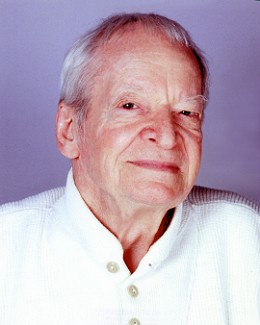 How wonderful and appropriate it is to receive this biography of Maurice Noble in the mail. Such beautiful art that only works within the confines of the films being reviewed.
How wonderful and appropriate it is to receive this biography of Maurice Noble in the mail. Such beautiful art that only works within the confines of the films being reviewed.
So often I play foolish rhyming games with myself and allow odd configurations to pop out of the type quickly passing in front of me. When I received this book the subtitle quickly gave me pause, “The Noble Approach. Maurice Noble the art and death of Animation Design.. Of course it took less than a second for the correct title to return to the cover in front of me. “Maurice Noble, the Zen of Animation Design.
Where did I get “death from” in those back recesses of my mind? Maurice Noble was probably the last of the GREAT designers from our masters’ age. Great artists like Rowland Wilson and Hans Bacher shape and form a movie and are responsible for much of the greatness that grows with the films they’re developing. Chuck Jones got a lot of glory; Maurice Noble brought the brilliance.
I’ve already started a series around Noble in honor of the excellent book released by Chronicle. I’m going to continue whole posts around the man’s art. There are at least another 4 das worth of information I have to get across, even if it’s just posting stills. Bear with my slow pace on it.
Botanical Party

The NY Botanical Garden is ready to have its 16th Annual Internationa American Society of Botanical Artists at the Horticultural Socidty of NY (better known as the Botanical Gardens to you.)
This will take place on Sept 20th and run through November 22nd, 2013.
Dick Rauh, our first ASIFA-East President (and the longest to hold that esteemed position) is represented, as ever, with a beautiful work. His is the beautiful work you’ll be looking for. It’s a good opening night party you’re invited to on Sept 20th from 6 to 8 PM.
Rocky Road of Impatience
Thanks to Jerry Beck‘s Cartoon Research, we’ve learned that Darrell Van Citters is putting together a book on the films of Jay Ward. Van Citters’ book on Mister Magoo’s Christmas Carol is surely one of the best books about animation to have reached market. The material was not very easy to reach, and there was plenty of factual information that well informed those who were interested.
That most definitely was me. I can remember waiting quite impatiently for the Magoo film to reach television, and I felt fully satisfied when the material played on screen.
Now there’s a promise of the jackpot of material about Jay Ward and the work that small but wacky and very intelligent crew turned out. There’s been nothing like it and I look forward to the book form, impatientl.
I’d feasted on the written material in Keith Scott‘s well written book about Ward and his cohorts (The Moose that Roared) and certainly wanted more. Now we may have found it via the intelligent writing of Mr. Van Citters.
Articles on Animation &Commentary &Frame Grabs 07 Sep 2013 02:24 am
Saturday Comments Live
Well, today’s Saturday, and I actually have a realio trulio live blog post for the day. We were able to get Verizon in to trip over their own shoelaces and figure out what was causing our phone problems. But they came through with blazing colors, and here we go again. Now I hope we can, at least, make it through the next week without having to shut down again.
More on St. Louis
I received a surprise check this week from the St. Louis Animation Film Festival.
 Maybe you’ll remember that we had to leave St. Louis in the middle of the night. Because of some enormous pain I was getting from an operation I’d had in NY, just the week before, doctors had to retrace their steps. The Festival felt that they should cover any overage costs that it took to get me into NY and onto Beth Israel’s operating table. The Festival folk couldn’t have been more generous. I was embarrassed just to have to pull out the way I did. They made it more than alright by covering extra travel costs that caught me unawares
Maybe you’ll remember that we had to leave St. Louis in the middle of the night. Because of some enormous pain I was getting from an operation I’d had in NY, just the week before, doctors had to retrace their steps. The Festival felt that they should cover any overage costs that it took to get me into NY and onto Beth Israel’s operating table. The Festival folk couldn’t have been more generous. I was embarrassed just to have to pull out the way I did. They made it more than alright by covering extra travel costs that caught me unawares
The award was made especially for me. and had just gone out via FedEx. The award celebrates my career with by illustrating my in-production film. Illustrated by a local talent, it depicts Vincent Price in the E.A.Poe position lookin’ over me. My new guardian angel will be looking out for me from my office wall. It’s working guys; it’s working.
The film isn’t even finished yet, and already it has an Award. Thanks to you.
Cliff Froehlich and the rest of his staff are first class people, I can guarantee that! Thank you Cliff and anyone else involved.
The commercial for “Christian Mingle” animation looks like it was pulled from the 60′s animated short, Nathan A]exander Davidson and his wife, done at their company, Zone One Oni Designs.
Christian Mingles lasts less than 20 secs whereas Cosmic Cartoon lasted almost 20. Both use lots of hand-done air brushing done on top of cels and photographed traditionally. At least, I know that’s how Cosmic Cartoon was done; you can’t really tell with the Christian dating service ad. One presumes they’re now using a computer for artwork and effects. Regardless, it’s a top-rate spot.
I’m sure the full film is out there somewhere on YouTube.
If Fred Ladd, John Lisberger or anyone else connected with the film want to give us more info, I’d love to see it in the comment section.
The same is true of Nathan Alexander Davidson. Tell us what you’re up to now. Any more such spots in the works?
I still haven’t gotten over the retirement of Hayao Miyazaki this past week. There are very few animation directors, historically, that I can think of whose influence was as far reaching and key to the art of the medium. There are enough live action film makers whose work was consistent and moving over a consistent number of themes. John Ford, Alfred Hitchcock, Howard Hawks and George Cukor
I’ll talk about this at length in the upcoming posts. The director’s influence has been too great on me to not pay great attention. (It’s at a time like this that I wish the late, great Tissa David were still around so that we could recap our thoughts with each other.)
Articles on Animation &Commentary &repeated posts 02 Sep 2013 01:12 am
Labor Day Reader
 - I’ve been watching some older animated features lately. Plague Dogs, I thought, deserved another chance, so I rented the DVD. I was right. The film is a very odd one.
- I’ve been watching some older animated features lately. Plague Dogs, I thought, deserved another chance, so I rented the DVD. I was right. The film is a very odd one.
Surprisingly, despite the depressing subject, I found myself unattached to the story’s emotions. I would guess it has to do with the direction of he work.

The film starts with one of our two lead characters
in deep trouble in the laboratory.
The story is essentially the story of two dogs who escape a laboratory that experiments on animals, and they make their way across the British countryside while teams of people search for them. One of the dogs has been inflicted with a plague bacteria and could spread the disease outside of the lab.
The story is told through a sort-of narration done in a very clever way. Disconnected human voices talking about the situation are used as voice over. We don’t often see who’s talking but we hear their voices. There are times where the voices start and we join the speakers in their conversations. The two dogs communicate with each other and a fox, who helps them in their escape.

The dogs escape and travel the back roads in the mountains.
The animation throughout is just about serviceable. No scenes really shine even though there are a couple of standout names in the credits – including Brad Bird, Tony Guy and Retta Scott – as animators.
The film was a follow-up project for producer/director, Martin Rosen. He was the original producer of Watership Down, and his ego allowed him to think he could direct that film better than John Hubley, who was fired within the first six months.


There’s the constant play between the traveling dogs
and the humans who talk about their roaming the countryside.
It’s no surprise that Plague Dogs includes no poetic scenes such as the introduction and the “Bright Eyes” sequences of Watership Down. It’s all down and heavy, done with a lack of grace. Yet, despite this there are several very clever devices for keeping the story moving forward. It would have been nice to see what better animation and a better director might have brought to it.


However, the film’s tough subject matter was sure to bring back poor business, and there’s no surprise in its low grosses at the box office. However, as I’ve said, the film deserves another look.
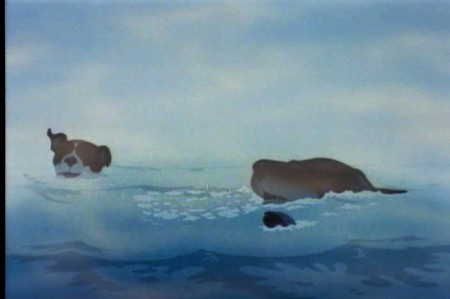
The film gasps for air with the heavy approach, though it deserves
praise for trying to be different and take animation seriously.
I can remember being in England, mixing the voice track of Tim Curry for that film. The recording engineer talked about having to sit through Plague Dogs so many times while mixing it, and explaining how the film had to fail at the box office. He talked in similar terms about When the Wind Blows which, at the least, had Raymond Briggs and David Bowie behind it. Not quite such a miserable failure as Plague Dogs, it still didn’t do well.
I’d always thought that “Doctor Rat” by William Kotzwinkle would have made a better animals-escape-lab story. It’s certainly a better read.
Animation &Animation Artifacts &Commentary &Illustration &Independent Animation 31 Aug 2013 08:27 am
Getting Old
You see the problem is that when you get older, priorities change. Take a look at Mike Barrier‘s blog. He knows what’s important amd surely it’s the ghsts of the past. Yes, we want to know who did what and when and where, and we move heaven and earth to get that part right. For the most part it is.
Then you have to look for and preserve those beautiful drawings of our youth. We get all the help we can, and we get it right. But there’s still so damned much work to do.
I’ve been digging into the archives, and lord knows most people aren’t ready to admit they’ve already viewed these drawings a half dozen times before. It’s not like saving Savannah or moving some extraordinary pictures. So they were moved on, then 0n again, before being devoured,
I love this work; I love animating it even more. When some semblance of life shows up in those drawings.
Getting older means it’s harder to get the point across. The message engines more seriously, and people all about watch for the brim of your head. They want to see you, too, so you’re on display like as not. The cartoon you planned has turned into some kind of “Art” and you try harder.
Then you really get tired. But you go on,god bless you. You try hard.
Commentary &commercial animation &Illustration &Layout & Design 30 Aug 2013 12:49 am
Child Development care – on a tight shoestring
- Let me give some attention to a series of films we did for UNICEF back in the 90′s. There were four films which focussed on Child Development, trying to teach parents in the Third World how to take care of their children in the first eight years of development.
The animation proved crucial, but without a unique artistic style there’d be nothin but cute baby pictures. We were successful (or I wouldn’t be talking about them.)
These films were brought to me by one, Cassie Landers. A well trained educator and an employee of Unicef where she promoted child development training and was hoping to use film to get the message across to the Third World.
Primary to these films was to get the point across that females deserved as much attention, including education, as the boys did. This is a major problem throughout the world, and UNICEF has done an entire series specifically for India about it.
Our aim was to encourage good diet, good behavioral practices and, again, the importance of a good education. The four films were ultimately combined with some live action footage of T. Berry Brazelton talking with children and introducing each of the four segments.
Hillary Rodham Clinton, as First Lady, introduced the entire 1/2 hr. show.
Here are some frame grabs from about 2/3 the scenes of the first film, Off To A Good Start.
 1
1
 2
2
After the UNICEF logo, the film started with a montage of children’s faces.
 3
3
I’ve compiled about a third of the faces.
 4
4
The camera continually moves in on the faces while …
 5
5
… constantly dissolving to the next setup.
 6
6
This was the opening to all four of the films.
 7
7
It was accompanied by narration by Celeste Holme describing the films.
 8
8
The narration was written by UNICEF Producer/educator, Cassie Landers.
Sue Perotto drew all of the children’s faces for the opening.
 10
10
The first film started with prenatal care.
 11
11
Giving a very short the child in the womb.
 12
12
Right through to the actual birth.
 13
13
Then it jumps to the first year of development.
 14
14
The art style was designed after Matisse’s Moroccan paintings.
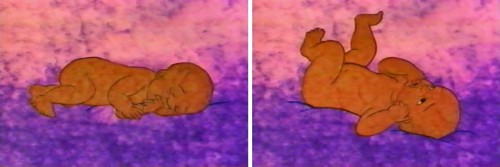 15
15
He had a very primitive set up colors with
earth-toned characters dominating their paintings.
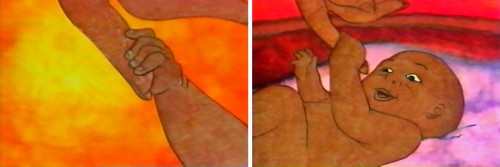 16
16
We tried to reproduce the feel of these paintings
allowing the texture of the paintings to run and bleed.
 18
18
This was all done pre-computer days, so all art was
painted on paper, then cut out and pasted to cels.
 19
19
It was all shot on camera by Gary Becker at his FStop Studios.
 20
20
The first year continues with similar setup.
 21
21
After showing some advanced activity . . .
 22
22
. . . we show how the brain has started to . . .
 23
23
develop enormously in this first year.
 24
24
The child learns to get up and crawl.
 25
25
From here she learns to walk.
 27
27
Then he learns to play more sophisticated games . . .
 28
28
. . .utilizing tools that require more dexterity and thought.
Directed by Michael Sporn
Produced and Written by Cassie Landers EdD, MPH
Narrated by Celeste Holme
Music by David Evans
Production Coordinated by Masako Kanayama
Backgrounds by Jason McDonald
Edited by Ed Askinazi
Photography by FStop Studio – Gary Becker & Bob Bushell
Technical Consultant Marc Borstein Nat’l Inst of Health, Bethesda MD.
Office Manager Marilyn Rosado
Animation by Rodolfo Damaggio, Sue Perotto, Michael Sporn
Rendering by Christine O’Neill, Matt Sheridan, Stephen MacQuignon, Masako Kanayama
Special Thanks to Nigel Fisher, Deputy Regional Director,
UNICEF Regional Office for the Middle East and Africa
Animation &Commentary &Daily post 29 Aug 2013 01:47 am
I can’t tell you how pleased I am to have received the biography of master designer, Maurice Noble by author, Tod Polson. The book has been one I’ve anticipated of for quite some time. I must admit a bit of disappointment in the number of illustrations throughout, but there’s still plenty there to write about, and I will take two posts combined to review this important book.
Late Nite Mystery
While in the hospital a week ago, I didn’t sleep very much. One channel in NYC, CBS, has been replaced by Time Warner and they’re predominantly showing older children’s fare late night. A number of the Pixar features including Cars, A Bug’s Story and a few other unimportant pieces were shown along with several independently produced odd films.
Only one feature really stood out for me. It looked like a Mexican version of Alice in Wonderland almost as though it were drawn by Bunuel and combined with some eccentric live action. It blended very eccentric cg animation with live action, and 2d art that was beautifully drawn and felt purely original. At one point a screen full of characters that looked as though they’d been drawn by the early Picasso, moved across the frame. The black line art was almost blown out by the overexposed whites, and it certainly was purposefully done.
Small groups of simply dressed people move through the screen, and they all looked like poor Mexicans.
I’ve searched to find the title of the movie, but haven’t had any luck. I’m sure it had a French title. If this sounds at all familiar, let me know. I’d like to own a copy and would like to write more coherently about the movie.
Almond Milk
I’ve really taken to a couple of simply drawn animated spots by Blacklist / Studio AKA. The art directors are: Lindsey Butterwick, Danica Conneely, and Michael Fiore. The spot seems to be be cgi trying to cover the look of 2D animation, and they’re very successful, to me. Gently composed commercials that always feel positive and happy.
They also seem to there no matter what channel you turn to.


